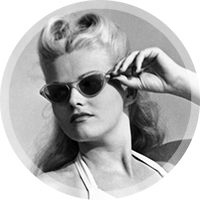

I don’t remember where I first learned to doubt myself, but I know where I began to learn to unlearn it: a tiny branch of an American art museum in the tiny steel valley town in which my mother lived. It was centrally located “downtown,” a two-block stretch of main street that had collected shops, restaurants and a bank in the first half of the last century and was then sliding into emptiness and neglect. It probably still is, if by now it hasn’t died completely.
The art museum had three gallery spaces, not-large open rooms plus a hallway that linked a minuscule gift shop and the entrance. There was also a front desk with an attendant, who was typically the only other person there other than me. That was the museum’s chief attraction to me. I was used to being not in small towns but in the country, where solitude was steps away in the woods, and when in any place more populous, I immediately sought out the spots of quiet and perspective.
Of course, I liked the art, too. Sometimes even the individual pieces, although in general I liked the fact of the art more than anything else. The fact that it was there, that someone somewhere had believed in their personal perspective strongly enough to express it in concrete form and put it in front of other people. This museum did not tend towards the avant grade—mostly they displayed tasteful landscapes with historical significance, photography and the odd accessible abstract. And yet, every bit of art represented a view beyond my own, a glimpse of a larger world and a courage of conviction that such a thing was worth looking at in the first place.
I spent an absurd amount of time in that little museum. I’m sure I mystified the attendants at that front desk. A lone teenager who chose to sit there and stare at paintings rather than take the quick ten-minute turn past them most visitors opted for. For me, it was a space for contemplation. A space built by windows into other places and people. A space built by ideas, and the idea that ideas mattered. I hadn’t known such a space before. It made me think, for the first time, that creation was important. More than that, it was something anyone could do. It was a secret power we had whether we knew it or not, the power to see and transform and construct something new, the power to present a world in our own images from our own perspectives, the power to create a space where you could know possibility.
I have never believed in a god, but I have always believed in art.
Now I live in a big city with a huge art museum. It is full of art that has been reproduced and seen by millions, in textbooks and on t-shirts and posters and advertising. Once, I stood behind a tourist couple looking at American Gothic and heard one whisper to the other, “Is that the real one?” It’s not their fault that they wondered. We teach art as a crowded collection of references that has practically collapsed in on itself at this point, granted importance by some mysterious hand of cultural authority that would probably also judge us for the clothes we wear or food we eat. We don’t teach art as a creation of space for humans to learn who they are and what they’re capable of. But that’s what it is.
I go to the huge art museum frequently. There are always a lot of people there, but it doesn’t matter, because it’s filled with space. Oh, the space that place has. The power it holds. I can sit there and look through a window of someone else’s eyes, and see their passion and their questions and their guesses and their desperation, and witness what they made out of all of it; and I know that what I feel and make is equally valid and there’s no need to doubt myself, because even out of a loud, dark and jumbled world, we can at least make something.